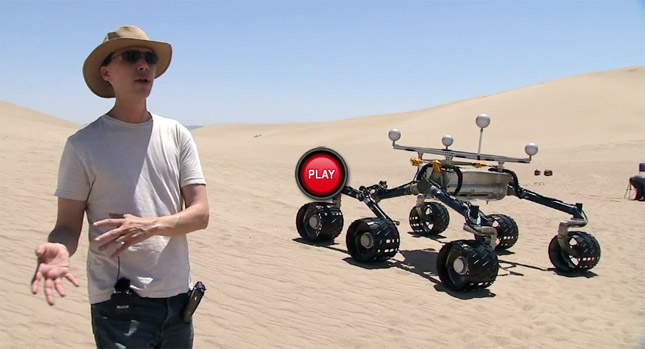The Jet Propulsion Laboratory or JPL for short is a government funded research and development center and NASA field center for robotic exploration of the solar system.
Among JPL’s most prominent projects is the Mars’ Curiosity rover that was launched by NASA on November 26, 2011, and is scheduled to land on the “Red Planet” on August 6, 2012.
Decked out with state-of-the-art equipment, the rover’s task will be to scour the planet’s surface to look for past or present life, study the geology and collect data.
While Curiosity flies in deep space, here on earth, NASA engineers are honing their driving skills by tackling California’s Mojave Desert with clones of the Martian dune buggy.
Since there are no gas stations at Mars, JPL’s Curiosity rover is powered by a Radioisotope Thermoelectric Generator.
JPL explained the propulsion system to a YouTube commentator thusly:
“Curiosity carries a radioisotope power system that generates electricity from the heat of plutonium’s radioactive decay. This power source gives the mission an operating lifespan on Mars’ surface of at least a full Martian year (687 Earth days) or more while also providing significantly greater mobility and operational flexibility, enhanced science payload capability, and exploration of a much larger range of latitudes and altitudes than was possible on previous missions to Mars.”
The Martian dune buggy is said to have a top speed of 40mm or 1.57 inches per second – if our math is correct, this comes out to 0.144 km/h or 0.0895 mph.
If you scroll down, you will find a video from NASA’s test-drive at the Mojave Desert.
Hat tip to Erico G!
Story References: NASA via Spectrum
VIDEO



